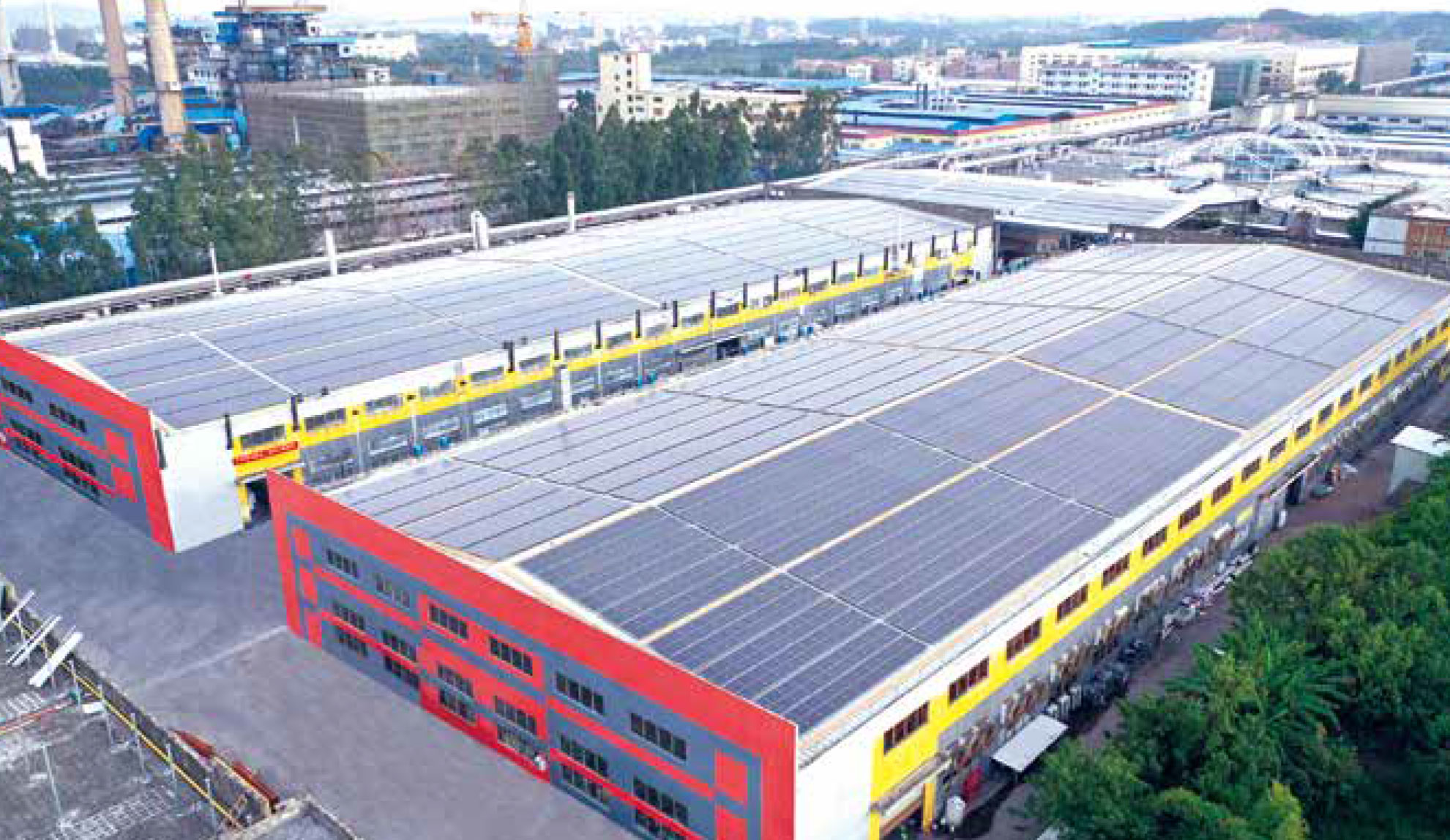1、輸出功率相對小,規模可靈活調整
1. The output power is relatively small, and the scale can be flexibly adjusted
分布式光伏發電項目的容量在數千瓦至數兆瓦之間,輸出功率遠遠小于大型地面光伏電站;可通過光伏發電的模塊化設計調整規模的大小;可根據屋頂面積與建設條件等因素調整光伏系統的容量;安裝方式相對靈活,適合在耗能集中區域進行分散式建設。
The capacity of distributed photovoltaic power generation projects ranges from several kilowatts to several megawatts, and the output power is far less than that of large ground photovoltaic power stations; The scale can be adjusted through the modular design of photovoltaic power generation; The capacity of photovoltaic system can be adjusted according to factors such as roof area and construction conditions; The installation method is relatively flexible and suitable for decentralized construction in energy-intensive areas.
2、項目污染少,環保效益突出
2. The project has less pollution and outstanding environmental benefits
分布式光伏發電與其他新能源項目相同,在發電的過程中沒有污染和噪音,也不會對空氣和水造成污染,適合在宜居的城市、偏遠地區發展,也是防治霧霾和實現節能減排目標的有效手段之一。
Like other new energy projects, distributed photovoltaic power generation has no pollution and noise in the process of power generation, and will not pollute the air and water. It is suitable for development in livable cities and remote areas, and is also one of the effective means to prevent haze and achieve the goal of energy conservation and emission reduction.

3、發電用電并存,輸電線路線損少
3. Power generation and consumption coexist, and transmission line loss is small
大型地面光伏發電是升壓接入輸電網,僅作為發電電源參與電網運行,而分布式光伏發電是接入配電網,直接發直接用,且大部分能就地消納。因不需要長距離輸送,因此不存在線損,且直接在配電網消納,利用率普遍高于地面光伏電站。
Large-scale ground photovoltaic power generation is connected to the transmission network by boosting voltage, and is only used as a power source to participate in the grid operation, while distributed photovoltaic power generation is connected to the distribution network, directly generated and used, and most of it can be consumed locally. Because there is no need for long-distance transmission, there is no line loss, which is directly absorbed in the distribution network, and the utilization rate is generally higher than that of ground photovoltaic power stations.
4、靠近負荷中心,對電網影響不大
4. Close to the load center, with little impact on the power grid
分布式光伏一般分布在中、東部負荷中心區域,直接售電給大型工商業用戶、住宅等,不需長距離輸送,節約電網成本,規模一般比地面并網光伏電站小,對電網的頻率、電壓波動影響有限。
Distributed PV is generally distributed in the central and eastern load centers, and directly sells electricity to large industrial and commercial users, residential buildings, etc., without long-distance transmission, saving power grid costs, generally smaller than the ground grid-connected PV power stations, and has limited impact on the frequency and voltage fluctuations of the power grid.
5、節約土地資源與開發成本
5. Save land resources and development costs
分布式光伏電站項目不需在集中連片的土地上開發,因此能夠有效節省土地資源,提高閑散屋頂、廠房的利用效率。同時,在大型工商企業用電需求日益增長的背景下,業主具有建設分布式光伏電站的積極性,項目開發成本一般低于大型并網光伏電站。
The distributed photovoltaic power station project does not need to be developed on concentrated and contiguous land, so it can effectively save land resources and improve the utilization efficiency of idle roofs and workshops. At the same time, in the context of the increasing demand for electricity by large industrial and commercial enterprises, the owners have the enthusiasm to build distributed photovoltaic power stations, and the project development cost is generally lower than that of large-scale grid-connected photovoltaic power stations.
With the above summary of distributed photovoltaic power generation, I hope it can help our customers. If you have any questions or need help, please click our website: http://www.51dwgw.cn Or call for consultation, and we will do our best to solve it for you



 TEL:0531-82390078
TEL:0531-82390078 TEL:18805312017
TEL:18805312017 MAI:sdzdny001@163.com
MAI:sdzdny001@163.com 公司地址: 濟南市歷下區山大路157號
公司地址: 濟南市歷下區山大路157號 天合藍天·山東種電
天合藍天·山東種電 備案號:魯ICP備17052940號-2
魯公網安備37010202700164號
備案號:魯ICP備17052940號-2
魯公網安備37010202700164號
 網站地圖|XML|TXT
網站地圖|XML|TXT

